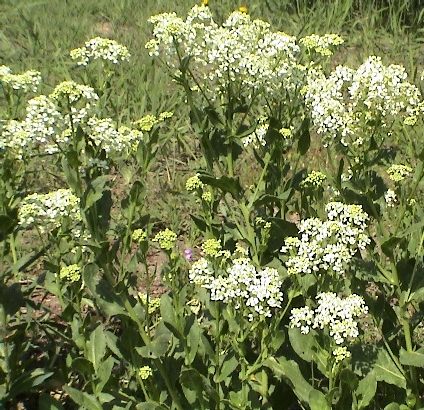Hoary Cress (Cardaria draba)
Identification
Hoary cress, aka whitetop, is a perennial forb originating from Eurasia. It is a member of the mustard family (which includes broccoli) and was probably introduced to North America in alfalfa seed. Hoary cress reproduces by seed and creeping roots. The root system spreads horizontally and vertically with frequent shoots arising from the root stock. The stems can grow between 10 to 18 inches tall.
Leaves are alternate and clasp the stem. The margins are wavy and shallowly toothed. Flowers are white, numerous, and occur in flattop clusters which give the plant its name. Seed pods are heart-shaped and contain two oval red-brown seeds about 1/2 inch long.
Hoary cress is one of the earliest perennial weeds to emerge in the spring. Flowering occurs between late April through May. It is an aggressive weed that forms dense colonies that make it difficult to control. Hoary cress can be found in pastures, small grain fields, roadsides, meadows, and waste places. Vigorous growth is likely to occur on irrigated sites and areas with alkaline soils. It can be found anywhere from 3,500 to 8,500 feet in elevation.




